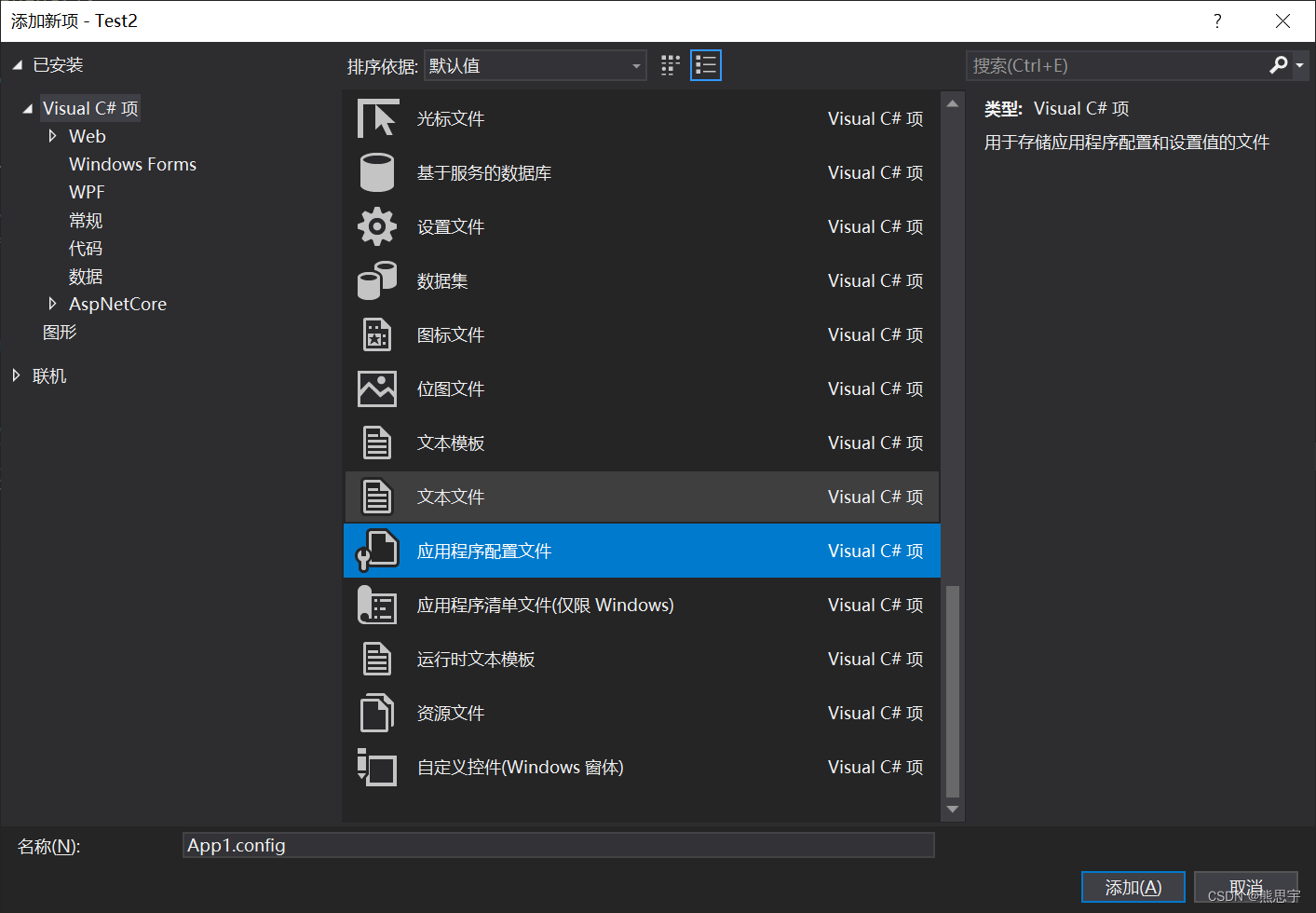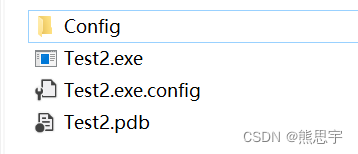C# 读写Config
熊思宇 人气:0一、前言
在软件开发中,经常用到设置这样的功能,如果设置中的功能不多,用 Json、XML 这样的数据结构存储非常的麻烦,一个字段的读写,就要写大量的代码,例如 Json 要写实体类才能进行读写,假设其中一个功能不用,要改的地方还真不少,使用 ini 这样的方式现在几乎没几个人用了,于是我决定用微软自带的Config文件方式。
于是搜索了一下自定义Config文件,发现网上大部分帖子都是读写 “软件名.exe.config” 文件,没什么用,和我设计需求不符合,于是我自己写了一个。
二、添加config文件
可以使用VS自带的添加功能,例如

当然也可以新建一个文本文档,然后改后缀名,再加入内容,都是一样的。
我在软件的根目录里新建了一个Config文件夹,就将配置文件放在这里面了

配置文件的名字,这里可以添加多个配置文件

配置文件内容如下:
<?xml version="1.0" encoding="utf-8" ?>
<configuration>
<appSettings>
<add key="COM1" value="我是一个串口号" />
</appSettings>
</configuration>三、读写配置文件
我们新建一个 Winform 项目,然后新建一个 ConfigHelper.cs 类
using System.Configuration;
namespace Utils
{
public class ConfigHelper
{
private string ConfigPath = string.Empty;
/// <summary>
/// 获取配置文件指定的Key
/// </summary>
/// <param name="key"></param>
/// <returns></returns>
public string GetConfigKey(string key)
{
Configuration ConfigurationInstance = ConfigurationManager.OpenMappedExeConfiguration(new ExeConfigurationFileMap()
{
ExeConfigFilename = ConfigPath
}, ConfigurationUserLevel.None);
if (ConfigurationInstance.AppSettings.Settings[key] != null)
return ConfigurationInstance.AppSettings.Settings[key].Value;
else
return string.Empty;
}
/// <summary>
/// 设置配置文件指定的Key,如果Key不存在则添加
/// </summary>
/// <param name="key"></param>
/// <param name="vls"></param>
/// <returns></returns>
public bool SetConfigKey(string key, string vls)
{
try
{
Configuration ConfigurationInstance = ConfigurationManager.OpenMappedExeConfiguration(new ExeConfigurationFileMap()
{
ExeConfigFilename = ConfigPath
}, ConfigurationUserLevel.None);
if (ConfigurationInstance.AppSettings.Settings[key] != null)
ConfigurationInstance.AppSettings.Settings[key].Value = vls;
else
ConfigurationInstance.AppSettings.Settings.Add(key, vls);
ConfigurationInstance.Save(ConfigurationSaveMode.Modified);
ConfigurationManager.RefreshSection("appSettings");
return true;
}
catch
{
return false;
}
}
public ConfigHelper(string configPath)
{
ConfigPath = configPath;
}
}
}上面的代码可以看到,我将配置文件的路径参数加入到了ConfigHelper的构造函数中去了,这样假设有个多个配置文件,直接实例化就好了。读写互相不相影响。
Form1 界面中我就添加了一个按钮,没有其他的控件,界面就不展示了,代码如下
using System;
using System.Windows.Forms;
using Utils;
namespace Test2
{
public partial class Form1 : Form
{
public Form1()
{
InitializeComponent();
}
private ConfigHelper ConfigHelpers = null;
private void Form1_Load(object sender, EventArgs e)
{
string configPath = Application.StartupPath + "\\Config\\SystemInfo.config";
ConfigHelpers = new ConfigHelper(configPath);
}
private void button1_Click(object sender, EventArgs e)
{
//读取Key
//string value = ConfigHelpers.GetConfigKey("COM1");
//Console.WriteLine(value);
//设置Key
bool result = ConfigHelpers.SetConfigKey("游戏名", "XX信条");
Console.WriteLine("执行完毕");
}
}
}读取Key
string value = ConfigHelpers.GetConfigKey("COM1");设置Key
bool result = ConfigHelpers.SetConfigKey("游戏名", "XX信条");加载全部内容